Shinto Shrines/Buddhist Temples/Sightseeing
- Shrines
- Buddhist Temples
- Sightseeing
- All
-
Iwashimizu Hachimangu Shrine
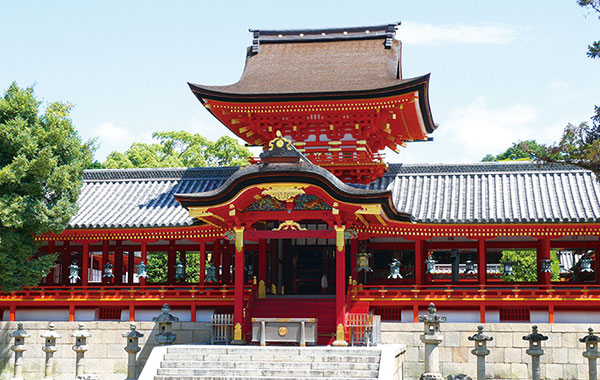
One of the three major shrines built in Japan to enshrine Hachiman, the tutelary god of warriors. The name of the shrine comes from Iwashimizu, a sacred spring on the slopes of Mt. Otokoyama. The shrine is believed to protect against evil. The current main buildings are a national treasure, and were built by Tokugawa Iemitsu, the third Tokugawa shogun. The grounds are a nationally designated historical site.
- Address: 30 Yawata-takabo, Yawata-shi
- TEL: 075-981-3001
- Operating hours: 6:30-18:00 (hours differ by season)
- Shrines
- MAP
-
Kora-jinja Shrine
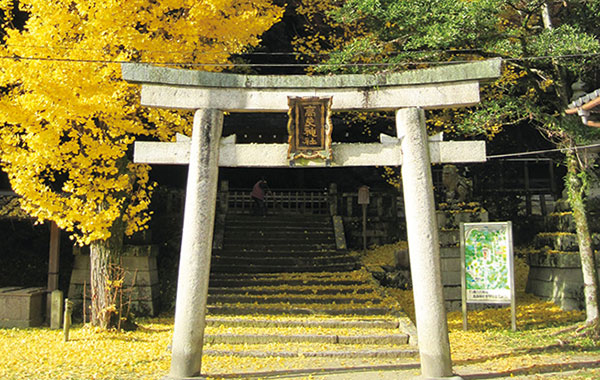
The guardian deity of Yawata is enshrined here, south of the Tongu (emperor’s temporary abode) at the foot of the Iwashimizu Hachimangu Shrine. Known for its appearance in Tsurezuregusa (Essays in Idleness), and the main buildings were rebuilt after they were burnt down during the Battle of Toba-Fushimi. Every July, the shrine hosts the grand Yawata Taiko Festival, a festival that began late in the Edo period (1603–1868).
- Address: Yawata-takabo, Yawata-shi
- Scheduled holidays: None
- Shrines
- MAP
-
Hiko-jinja Shrine
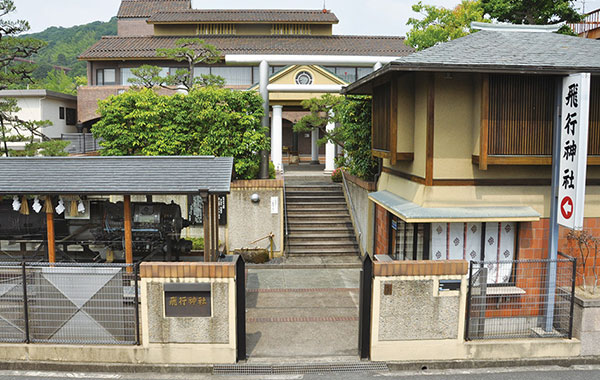
The shrine was built by Chuhachi Ninomiya, the inventor of the first rubber-powered propeller airplane in Japan. It was built to offer prayers for safety in the skies and the advancement of the aviation industry. The grounds also contain a museum with materials associated with Ninomiya, articles donated by industrial associations, and more.
- Address: 44 Yawata-doi, Yawata-shi
- TEL: 075-982-2329
- Operating hours: Grounds: 9:00-16:30, Museum: 9:00-16:00 (Last admission: 15:45)
- Shrines
- MAP
-
Misono-jinja Shrine
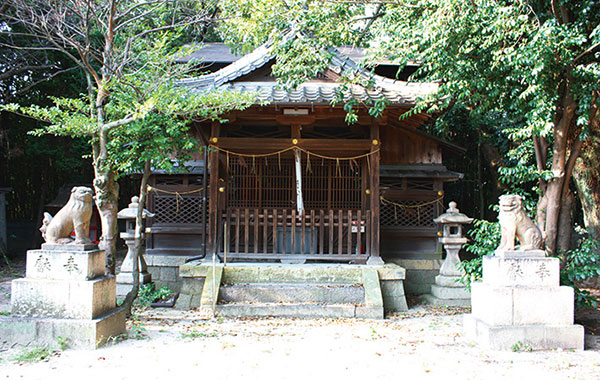
The shrine is located on the east side of the Kaminara district of Yawata. The main shrine was built in the mid-Edo period (1603–1868), with a streamlined cypress-bark roof and a width of just one pillar span.
The shrine is an ancient relic of the architectural style of the Yamashiro region of Kyoto, and thus has been designated a cultural property by the prefectural government. The annual Zuiki Mikoshi in October is a sight to see, with zuiki (taro stalks) and more than 30 different kinds of vegetables decorating the mikoshi (portable shrine).- Shrines
-
Ishida-jinja Shrine
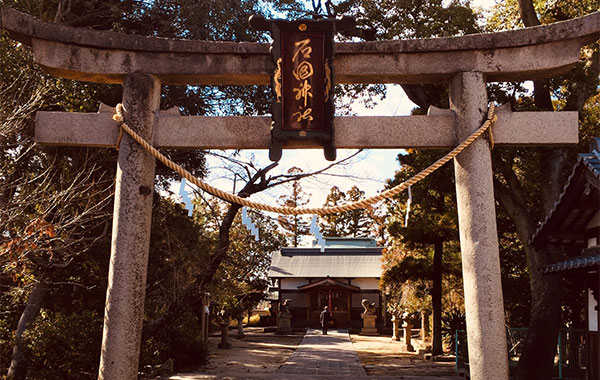
The grounds are enclosed by a moat-shaped waterway, and protected by a lush, sacred forest. The shrine also houses more than 1,200 ancient documents treasured for their descriptions of the history of the shrine and the Kozuya area.
- Address: 77 Kozuya-satogaito, Yawata-shi
- TEL: 075-981-9816
- Shrines
- MAP
-
Uchi-jinja Shrine
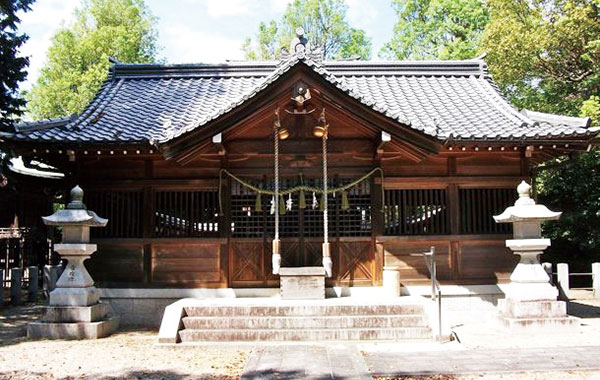
Located at the southwest edge of the Uchizato district of Yawata, the grounds have been designated as an environment preservation area for cultural properties by the prefectural government.
The former main shrine built in the mid-Edo period (1603–1868) is a registered cultural property of Kyoto Prefecture, and is preserved beside the current main shrine built in 2001.- Address: 1 Uchizato-uchi, Yawata-shi
- Shrines
- MAP
-
Aitsuchi-jinja Shrine
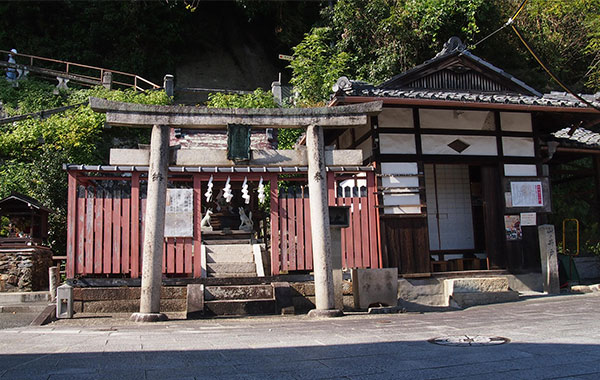
It is said that the god of Inari and Ohara Yasutsuna, the legendary swordsmith who created Dojigiri-Yasutsuna, one of the Tenka-Goken (five great swords), made two famed swords—Higekiri and Hizamaru—at this shrine using water from the Yamanoi well on the grounds.
- Address: 10 Yawata-byodani, Yawata-shi
- Operating hours: Visit anytime
Visitors can receive goshuin (red temple seals) at the Kasuga-jinja Shrine Office.
The shrine office is open on the 1st and 15th of every month, around 9:30-12:00
- Shrines
- MAP
-
Wake-jinja Shrine
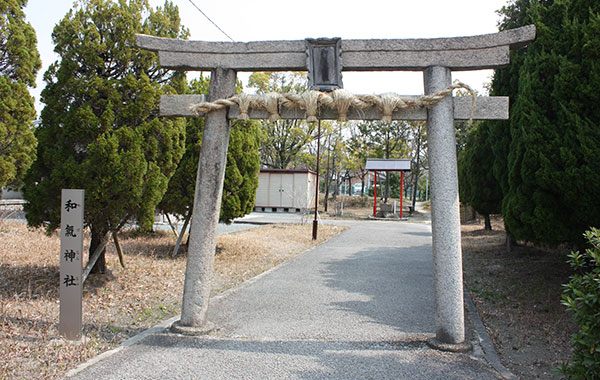
Located adjacent to Sokuryuji Kanko Park, this shrine acts as a guardian shrine of the Nishiyama region of Yawata, enshrining deities such as Go-o Myojin (Wake-no-Kiyomaro (733–799)) and the great god Hachiman (Emperor Ojin).
- Address: 1-4 Nishiyama-waki, Yawata-shi
- Shrines
- MAP
-
Sarutahiko-jinja Shrine
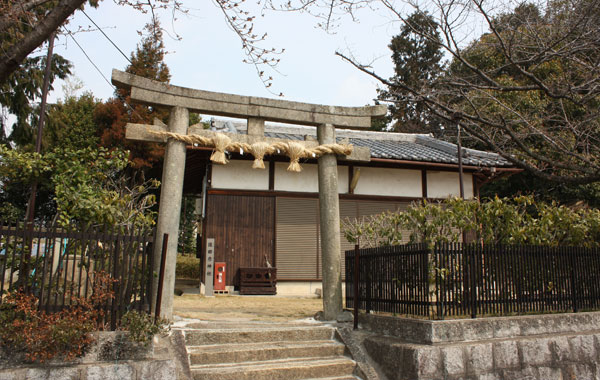
A shrine dedicated to the god Sarutahiko.
When the great god Hachiman moved to the Iwashimizu Hachimangu Shrine, it is believed that the god Sarutahiko led the way. Being the guardian shrine of the Hiranoyama region of Yawata, it has appeared in the Otokoyama Kokoroku (Archaeological Record of Otokoyama), a topographical description of the area written in the mid-19th century.
It describes the pair of boulders behind the torii (archway) known as Meotoiwa—a common name for differently sized pairs of boulders, meaning “husband and wife rock,” standing just the same as today along with the torii and stone fence.- Address: 27 Hashimoto-higashihara, Yawata-shi
- Shrines
- MAP
-
Doromatsu Inari-jinja Shrine
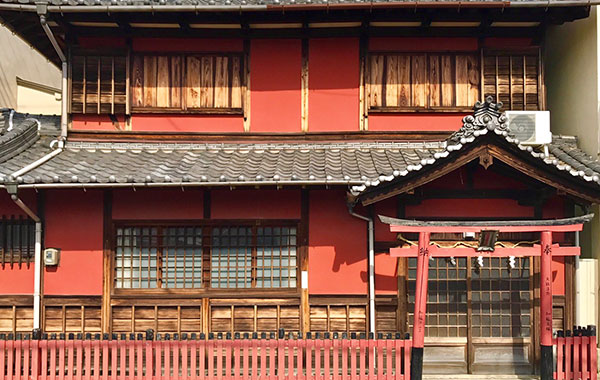
A shrine dedicated to the great god Doromatsu Inari, and marked by a red wooden torii (archway) on the side of the Higashi-Koya Kaido near Hakkakudo Shrine.
It is said that long ago, a temple priest rescued a raccoon dog named Doromatsu and inherited its supernatural powers, namely the ability to tell accurate fortunes. The news spread quickly, and a torii and shrine were dedicated to the deity.- Address: 32 Yawata-hirokado, Yawata-shi
- Shrines
- MAP
-
Otobira Inari-sha Shrine
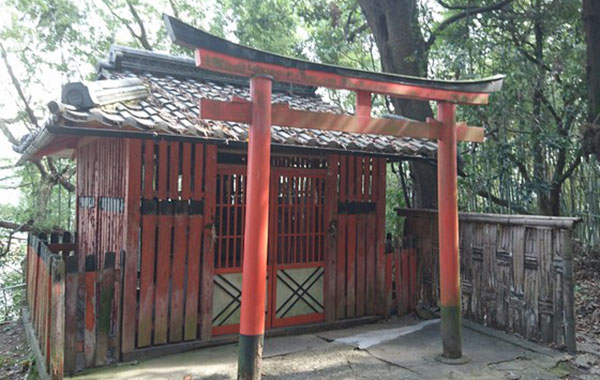
Lotteries were popular at the time this shrine was constructed, and when people who prayed here said they miraculously gained wealth, the number of followers increased, and the shrine was built with donations. Today, the shrine has inspired a quiet boom among people searching for fortune in lotteries.
- Address: 15 Yawata-takabo, Yawata-shi
- Shrines
- MAP
-
Togano-o-jinja Shrine
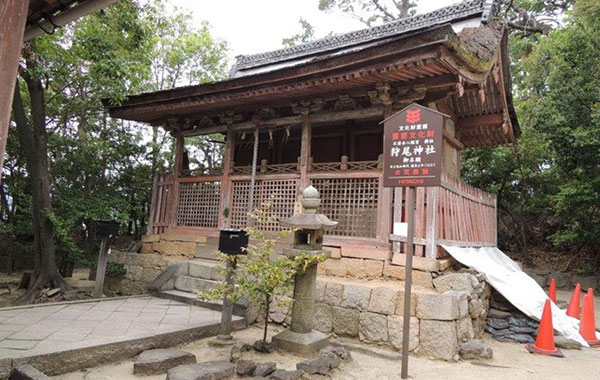
The date of the shrine’s establishment is unknown, but it is believed to predate the relocation of the Iwashimizu Hachimangu Shrine, and is considered the original shrine of the deity associated with the mountain.
The main building is a designated important cultural property with a streamlined cypress-bark roof and a width of three pillar spans. The enshrined deities are Amaterasu Omikami, Onamuchi-no-Mikoto, and Amenokoyane-no-Mikoto. In 1877, the shrine became part of the grounds of the Hachimangu shrine.- Address: 1 Hashimoto-togano-o, Yawata-shi
- Shrines
- MAP
-
Jinno-ji Temple
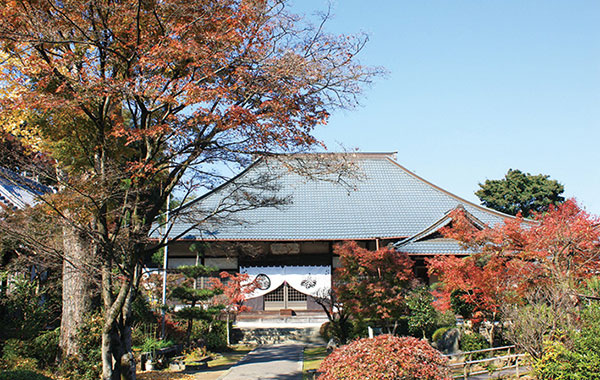
A temple constructed in 860 by Gyokyo, who established the Iwashimizu Hachimangu Shrine. The temple enshrines a seated statue of Gyokyo (important cultural property) and a statue of Toyotomi Hideyoshi in traditional formal court dress. The drawing room, which was relocated from Momoyama Castle, features paintings of tigers in bamboo, an ox-drawn court carriage, and more by artist Kano Sansetsu.
- Address: 24 Yawata-nishitakabo, Yawata-shi
- TEL: 075-981-2109
- Operating hours: *Please call in advance to schedule a visit
- Buddhist Temples
- MAP
-
Shobo-ji Temple
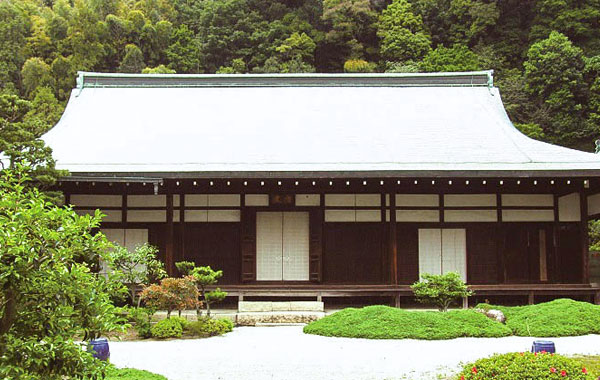
The temple was decreed a temple for national peace and security by Emperor Gonara during the Muromachi period (1336–1573). Later, it was repurposed as an ancestral temple for Okame-no-Kata (Sou-o-in), a concubine of Tokugawa Ieyasu. The temple features many highlights, including important cultural properties such as the main hall, the grand abbot’s chambers, the Chinese-style gate, and a seated statue of Amida Nyorai, as well as Kano-school paintings on sliding doors, and a garden designated as a famous scenic spot by the prefectural government.
- Address: 73 Yawata-shimizui, Yawata-shi
- TEL: 075-981-0012
- Operating hours: 10:30-15:00 (on designated open days only)
- Buddhist Temples
- MAP
-
Zenporitsu-ji Temple
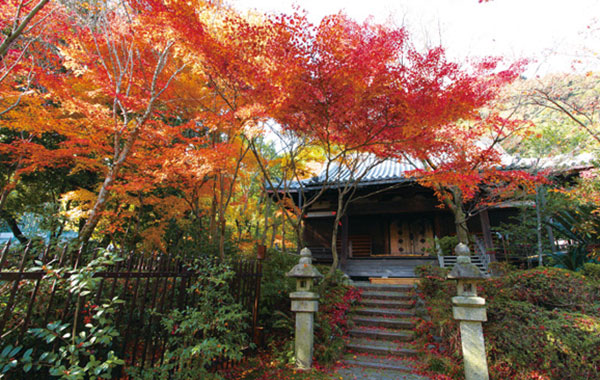
After donating his residence to serve as temple quarters for priests, Zenpoji Kyusei, the officer of the Iwashimizu Hachimangu Shrine, invited Jisso Shonin, the high priests of Todai-ji Temple in Nara to establish this temple. The temple is nicknamed Momiji-dera (Temple of Autumn Colors) due to the roughly 100 Japanese maple trees populating the temple grounds, creating beautiful crimson red leaves in autumn and fresh green leaves in spring.
- Address: 88-1 Yawata-baba, Yawata-shi
- TEL: 075-981-0157
- Operating hours: 9:00-17:00
*Feel free to walk around the temple grounds. Please call in advance to schedule a visit to the main hall.
- Buddhist Temples
- MAP
-
Taisho-ji Temple
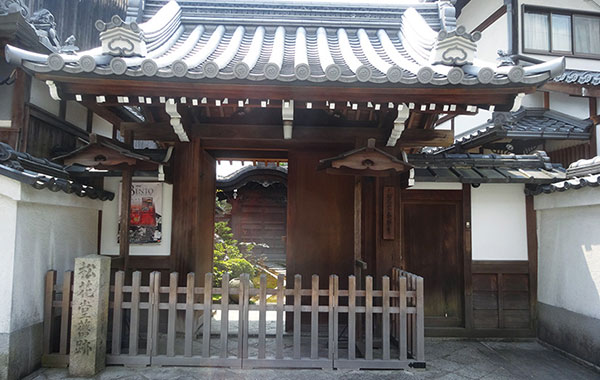
Built in 1918, the temple is associated with Shokado Shojo, a priest and historical figure of Yawata. The grounds contain Shokado’s grave, a treasure hall, and more. The Kan'unken tea room once used by Shokado has been restored and selected as one of the top 100 tea rooms in Japan.
- Address: 18 Yawata-byodani, Yawata-shi
- TEL: 075-981-0056
- Buddhist Temples
- MAP
-
Tanden-an (Rakugaki-dera Temple)
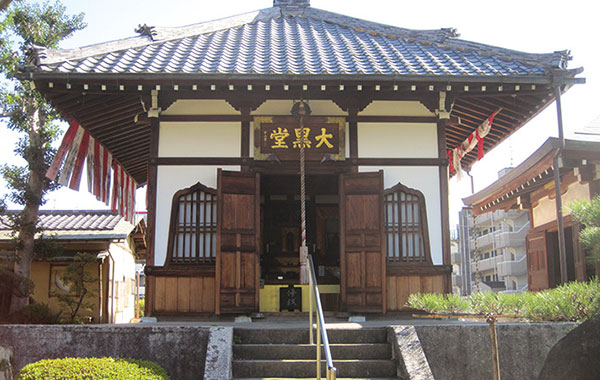
A temple where visitors can write their wishes on the walls to make them easier for the god Daikoku to see. This unique way of offering prayers was started by the chief temple priest around 60 years ago to fulfill the wishes of people who helped with the reconstruction of the Daikokudo Hall.
- Address: 33 Yawata-yoshinogaito, Yawata-shi
- TEL: 075-981-2307
- Buddhist Temples
- MAP
-
Enpuku-ji Temple
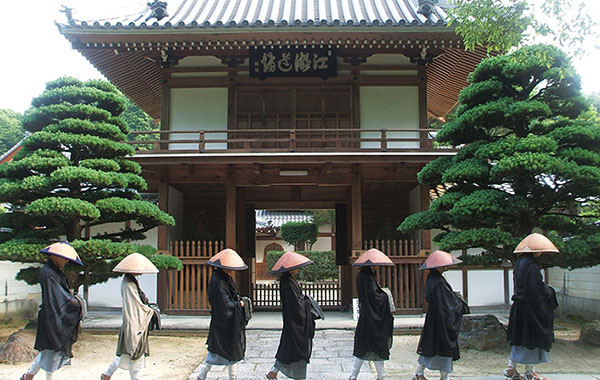
The temple was constructed as the Goko Dojo, the first specialized dojo for the Rinzai sect of Zen Buddhism. The temple is also known as Daruma-do because it enshrines the oldest seated statue of Daruma Daishi, a designated important cultural property. The temple is open to visitors only twice each year: on April 20, and on October 20 during the Manninko festival.
- Address: 153 Yawata-fukurokudani, Yawata-shi
- TEL: 075-981-0142
- Operating hours: April 20, and October 20 during the Manninko festival. On all other days, only the main gate is open for viewing
- Buddhist Temples
- MAP
-
Honmyo-ji Temple
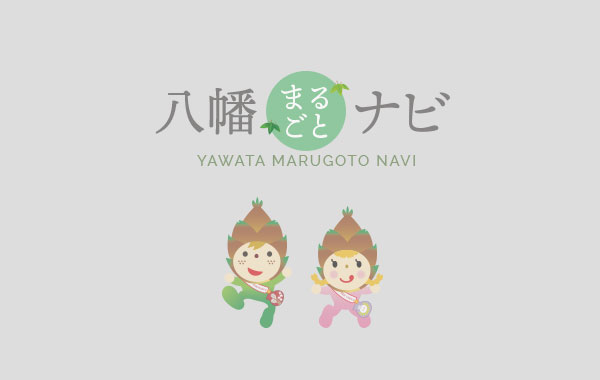
A statue of a Nichiren high priest is enshrined at this subordinate temple of Honryu-ji Temple of the Shinmon branch (affiliated with the Hokke branch) of the Nichiren sect of Buddhism. The temple was founded at the end of the Muromachi period (1336–1573). In front of the main hall, there is a stone monument to the Nichimon high priest who was martyred during the Azuchi religious debate, a dispute between the Hokke and Jodo sects of Buddhism overseen by Oda Nobunaga.
- Address: 34 Yawata-jonouchi, Yawata-shi
- Buddhist Temples
- MAP
-
Sugiyama-tani Fudoson
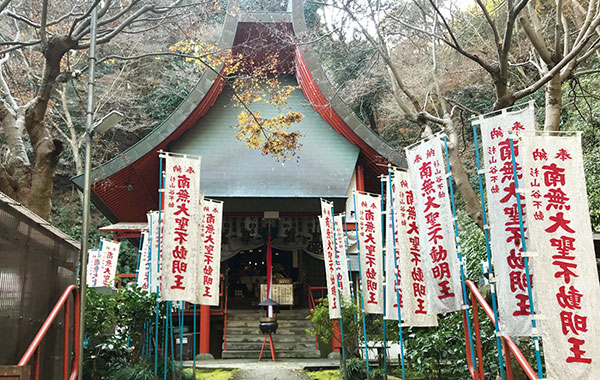
Located on a path in a quiet valley on the west side of Hachimangu Tongu Shrine, this shrine is believed to protect against evil. In the main hall, there is a seated Buddhist deity Fudo Myo-o with an angry expression to keep demons at bay, flanked by two life-sized children that govern both good and evil.
- Address: Yawata-takabo, Yawata-shi
- TEL: 075-981-2109
- Buddhist Temples
- MAP
-
Koden-ji Temple
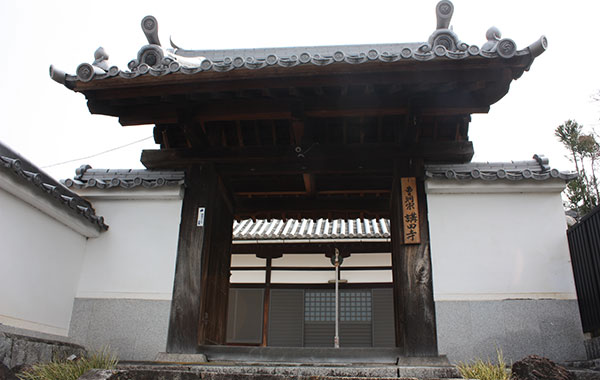
This Soto sect temple enshrines the statue of the Bodhisattva of Compassion. In the main shrine, the gentle smile of the Warai-Jizo statue is a testament to the tragic legend of human sacrifice. Aburakake-Jizo is also enshrined on the temple grounds.
- Address: 34 Hashimoto-hiranoyama, Yawata-shi
- TEL: 075-981-0456
- Buddhist Temples
- MAP
-
Ruins of the 48 Temples of Otokoyama

During the syncretic fusion of Shintoism and Buddhism in the Edo period (1603–1868), the Hozo-bo (a prayer hall for the Tokugawa family), the Takimoto-bo (a structure associated with Shokado Shojo), the Sen-bo, and other structures on Mt. Otokoyama—the location of the Iwashimizu Hachimangu Shrine—were collectively called the “48 Temples of Otokoyama.”
- Buddhist Temples
-
Otokoyama Observatory
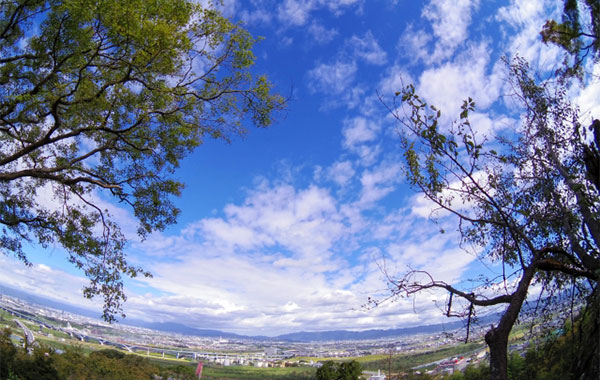
A well-known scenic spot located near Cable-hachimangu-sando Station on the Keihan Cable Line, offering a panoramic view of the city of Kyoto beyond the confluence of the Katsura, Uji, and Kizu rivers, and superb views of Mt. Tennozan to the west and Mt. Hiei and the Uji mountain range to the east. The views are even more impressive during the seasons for viewing cherry blossoms and autumn leaves.
- Sightseeing
-
Shokado Garden Art Museum
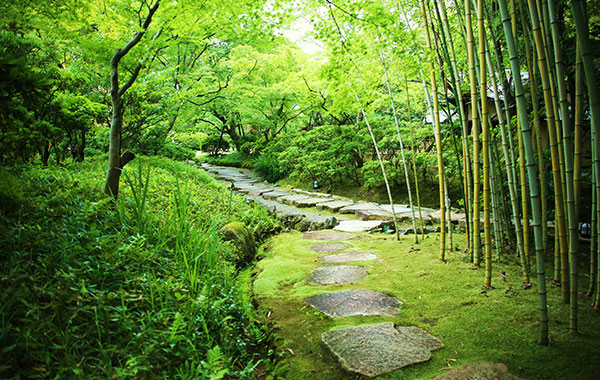
A garden associated with Shokado Shojo, a priest and historical figure who played a central role in the elegant Kan'ei culture in the early Edo period (1603–1868). Visitors can enjoy an open-air teahouse garden, a Japanese rock garden, and other charming areas. There is also an art museum displaying materials associated with Shokado.
- Address: 43-1 Yawata-ominaeshi, Yawata-shi
- TEL: 075-981-0010
- Operating hours: 9:00-17:00 (Last admission to garden/museum: 16:30)
- Sightseeing
- MAP
-
Edison Monument
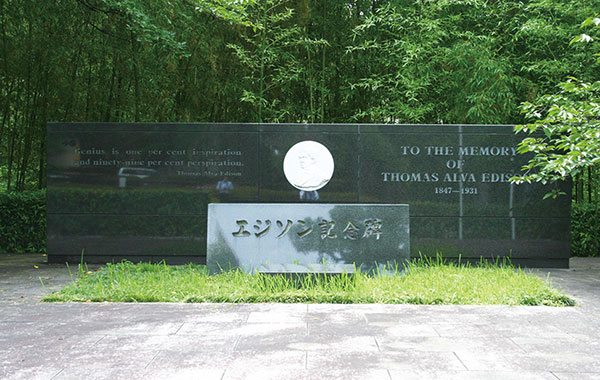
Thomas Edison collected and tested bamboo from around the world in an effort to perfect the light bulb, and chose Japanese timber bamboo from Yawata after observing it burn for 1,000 hours. The stone monument has been preserved since it was erected in 1934 to celebrate Edison’s great achievement (it was rebuilt in 1984).
- Sightseeing
- MAP
-
Ango Bridge
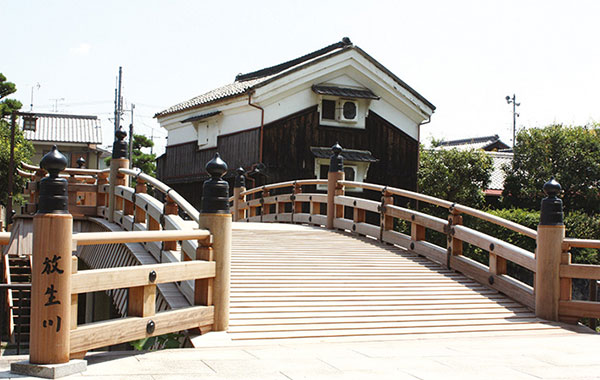
This bridge that spans the Hojo River flowing at the foot of Mt. Otokoyama is one of the top eight scenic spots of Yawata. The bridge is also called “Taiko-bashi” due to its large semicircular shape reminiscent of a taiko drum. The walking paths along both banks of the Hojo River and the grounds of the Hachimangu shrine on the left bank are wonderful places to relax and refresh.
- Sightseeing
- MAP
-
Floating Bridge (Kozuya Bridge)
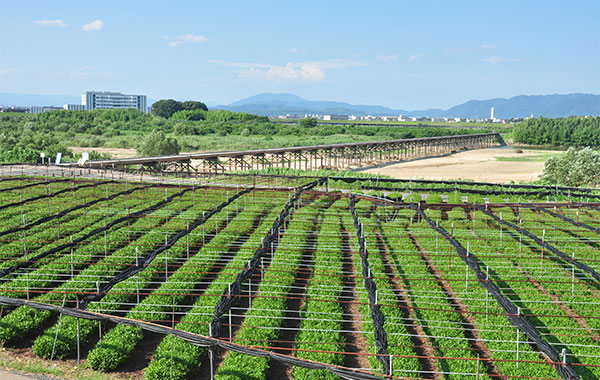
The longest wooden bridge in Japan, with a total length of 356.5 m that spans the Kizu River. The deck is designed to flow downstream to reduce resistance during floods. The white, sandy riverbank and the clear stream combine to form harmonious scenery that is often used for film shoots.
- Sightseeing
- MAP
-
Sewaritei Embankment
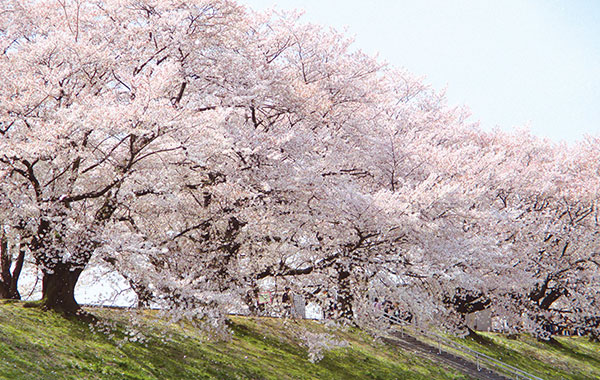
An embankment that separates the Uji and Kizu rivers. In spring, it becomes a picturesque sight, the cherry blossoms forming a stunning tunnel overhead that stretches roughly 1.4 km. The abundant nature along the banks of the river give visitors a place to take leisurely strolls while enjoying the seasons.
- Sightseeing
- MAP
-
Sea Voyage Memorial Tower
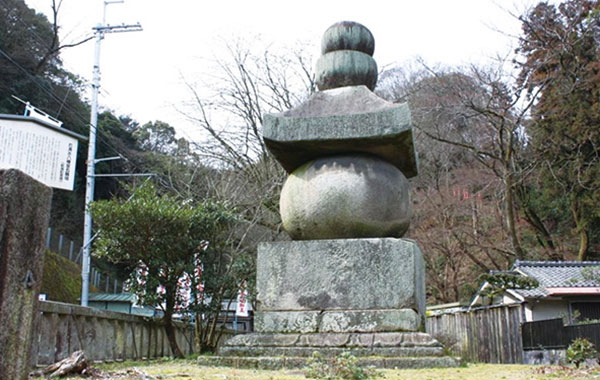
A massive five-layer stone tower standing roughly six meters tall. It was the largest in Japan during the Middle Ages, and is a designated important cultural property. Several theories about the monument exist, including one that holds that a wealthy merchant from Amagasaki donated it after avoiding disaster at sea thanks to praying at the Iwashimizu Hachimangu Shrine, and another in which a monk named Eison built it.
- Sightseeing
- MAP
-
Isa Family Residence
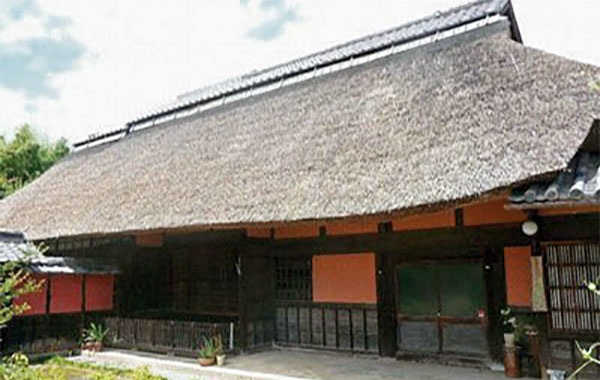
The residence of the Isa family, who served as the village headmen for the shogunate territory during the Edo period (1603–1868). The house features a large thatched, semi-gabled roof, and red walls made of Momoyama, a plaster that is no longer available. Tours of this nationally designated important cultural property are available with reservations.
- Address: 65 Kozuya-hamagaito, Yawata-shi
- TEL: 075-983-0129
- Operating hours: *Reservations required (Reservations can be made at Shikisai-kan)
- Sightseeing
- MAP
-
Sakura Kinrin Park
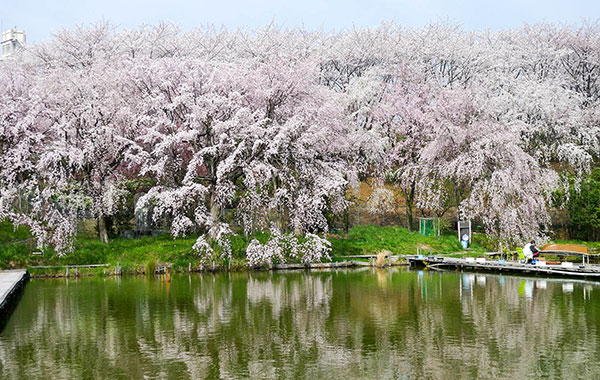
Roughly 250 cherry trees (Yoshino Cherry and other varieties) are planted around the pond and elsewhere in the park. One of the best times to view the cherry blossoms is when they are illuminated at night.
- Sightseeing
-
Yorikaze/Ominaeshi Tombs
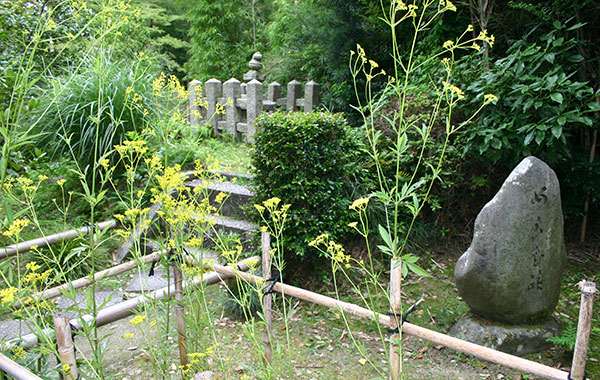
The Yorikaze Tomb (a.k.a. Otoko-zuka, or "male tomb") is the larger of the two. It is a small five-layer stone monument located behind a Japanese confectionery store near the Yawata Municipal Library. The smaller of the two, the Ominaeshi Tomb (a.k.a. Onna-zuka, or "female tomb"), is also a small five-layer stone monument. It is located in the western corner of the Shokado Garden.
- Sightseeing
- MAP
-
Shinko Bridge
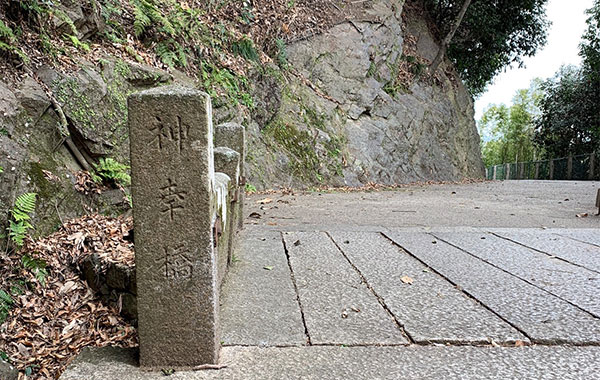
A stone bridge located roughly 100 m from the Ni-no-Torii (Second Archway) at the foot of Mt. Otokoyama. It spans Haraidani, a valley cut deep into the rock cliffs of the mountainside.
- Sightseeing
- MAP
-
Nemonogatari Kuniwakekyo Stone Monument
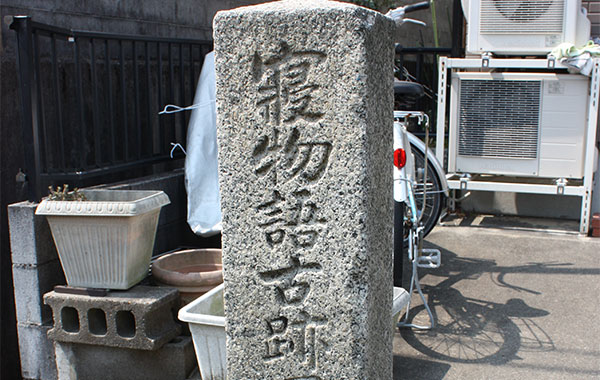
A monument erected to commemorate the story of a villager who cost his village some territory because he overslept. Long ago, borders between districts and villages were determined by having villagers depart from their respective villages at the same time, marking the border at the place they met. This villager fell asleep thinking there was more time until his departure than there actually was, and departed late.
- Sightseeing
- MAP
-
Geba Stone Monument
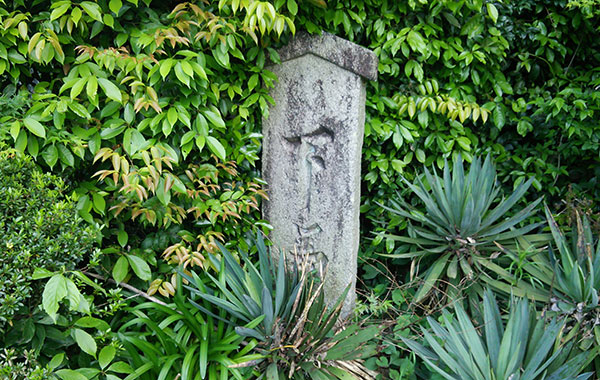
A stone monument located south of Aitsuchi Inari-sha Shrine, to the left of the stone steps leading up to the Iwashimizu Hachimangu Shrine. It is believed that the two characters for “Geba” were inscribed by Shokado Shojo, the chief temple priest of Takimoto-bo.
- Sightseeing
-
Higashi-Koya Kaido

One of the roads from Kyoto to Mt. Koya, running a length of roughly 4.5 km within Yawata city limits. The road runs through Yawata, going from Enpuku-ji Temple and over the Horagatoge Pass into Osaka Prefecture. It was often used for spiritual visits to the Omine Mountains from Mt. Koya.
- Sightseeing
-
Former Residence of Yodoya Tatsugoro

In 1715, influential merchant Yodoya the Fifth, Tatsugoro regained a vast field of the mountain forests of Yawata for amnesty, and the following year returned to Yawata to settle in this residence with his wife Azuma and his daughter Io. Unfortunately, Tatsugoro died in 1717, and Azuma died in 1720, orphaning Io at the age of nine or ten. She was later killed by her husband, and portrayed as the tragic heroine in a dramatic recitation of Japanese puppet theater.
- Sightseeing
-
Dondo-no-Zushi

After being pardoned, Yodoya Tatsugoro settled in his residence in the Shibaza district of Yawata, where he used bamboo gutters to draw water from the slopes of Mt. Otokayama into water basins. It is said that the water flowing down the gutters made a “dondo-dondo” sound, so the path along which the water gutters were laid was called “Dondo-no-Zushi,” and the residences along the path were called “Dondo Yokocho.”
- Sightseeing
-
Grave of Yodoya Tatsugoro

It is said that Yodoya Tatsugoro’s posthumous Buddhist name, Senryuken Tossaikoan Koji, bears a hidden meaning. The front-center grave is for Genkoan, the second-generation head of the Yodoya family, and the grave on the left is for Yodoya Kasai, the third-generation head. The grave on the right is for Yodoya Goroemon, Kasai’s father and the younger brother of Genkoan.
- Sightseeing
